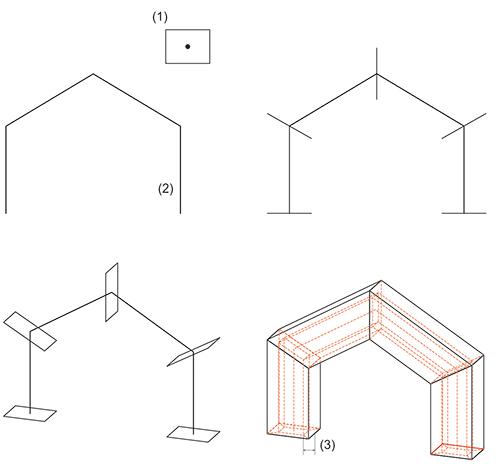Polyhedral Surface: Connect Cross-Sections
3-D FFS > From c-edges > Connect  > Connect cross-sections
> Connect cross-sections 
Use this function to create a polyhedron by connecting the cross-sections of a framework. The active part needs to contain a framework, which you can, for instance, create with the Place cross-section function and the scaling function Same profile.
- After function selection, specify the wall thickness.
- If the cross-section is closed you can subsequently determine how the base surface and top surface is to be treated:
 Close base surface only
Close base surface only
 Close top surface only
Close top surface only
 Close base and top surface
Close base and top surface
 Do not close
Do not close
A polyhedron with the same profile, but with an enlarged cross-section in the mitre-cut area is created.

In the image above, the cross-section has been placed on the guideline via fitting point specification. The placed cross-sections were then, after specifying the wall thickness, connected to form a polyhedron with open base surface and top surface.
 Cross-sections with different numbers of points are not allowed here, i.e. the c-edges forming the cross-sections must have the same number of points.
Cross-sections with different numbers of points are not allowed here, i.e. the c-edges forming the cross-sections must have the same number of points.

Interpolate Cross-Sections (3-D FFS) • Overview of Functions (3-D-FFS) • Polyhedral Surfaces (3-D-FFS)
